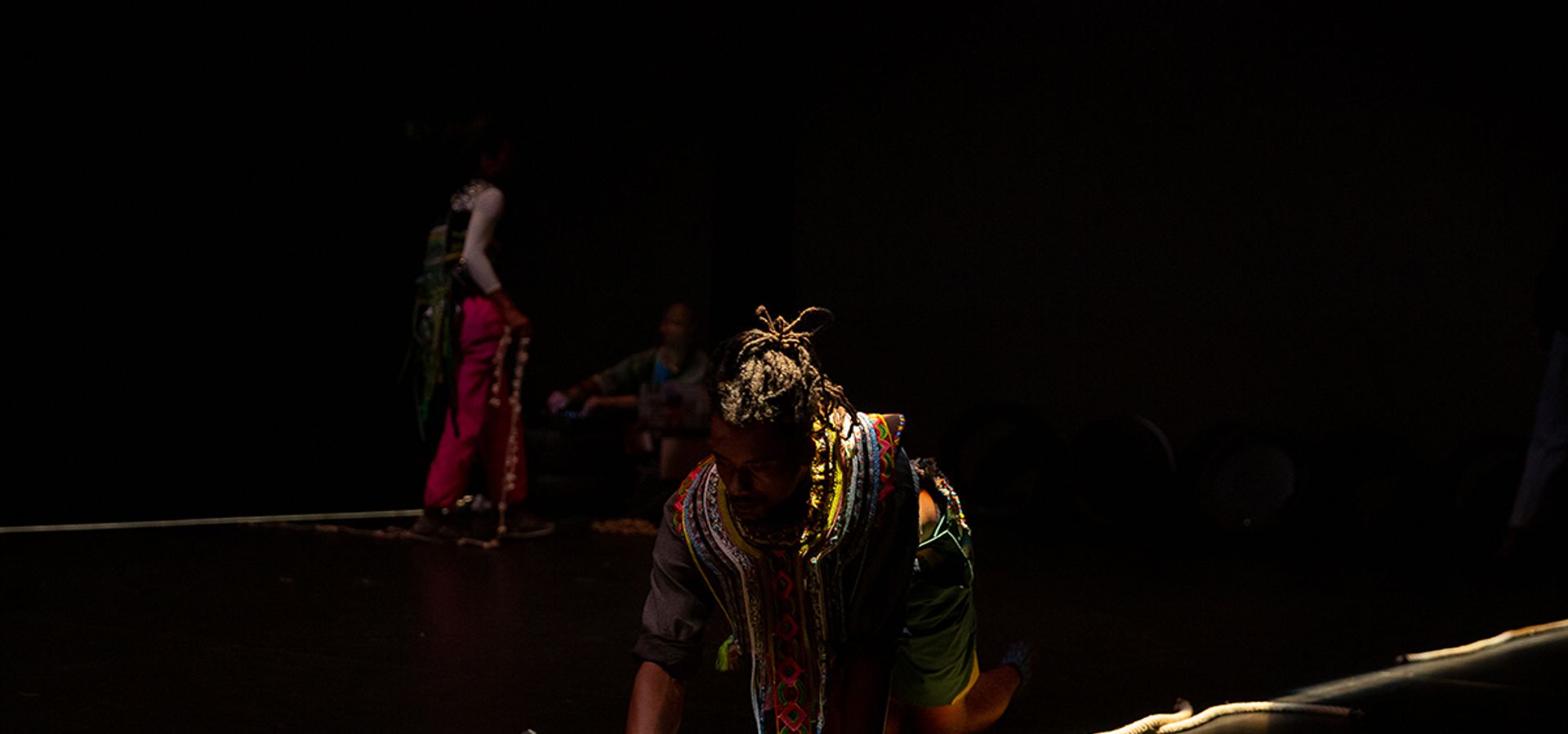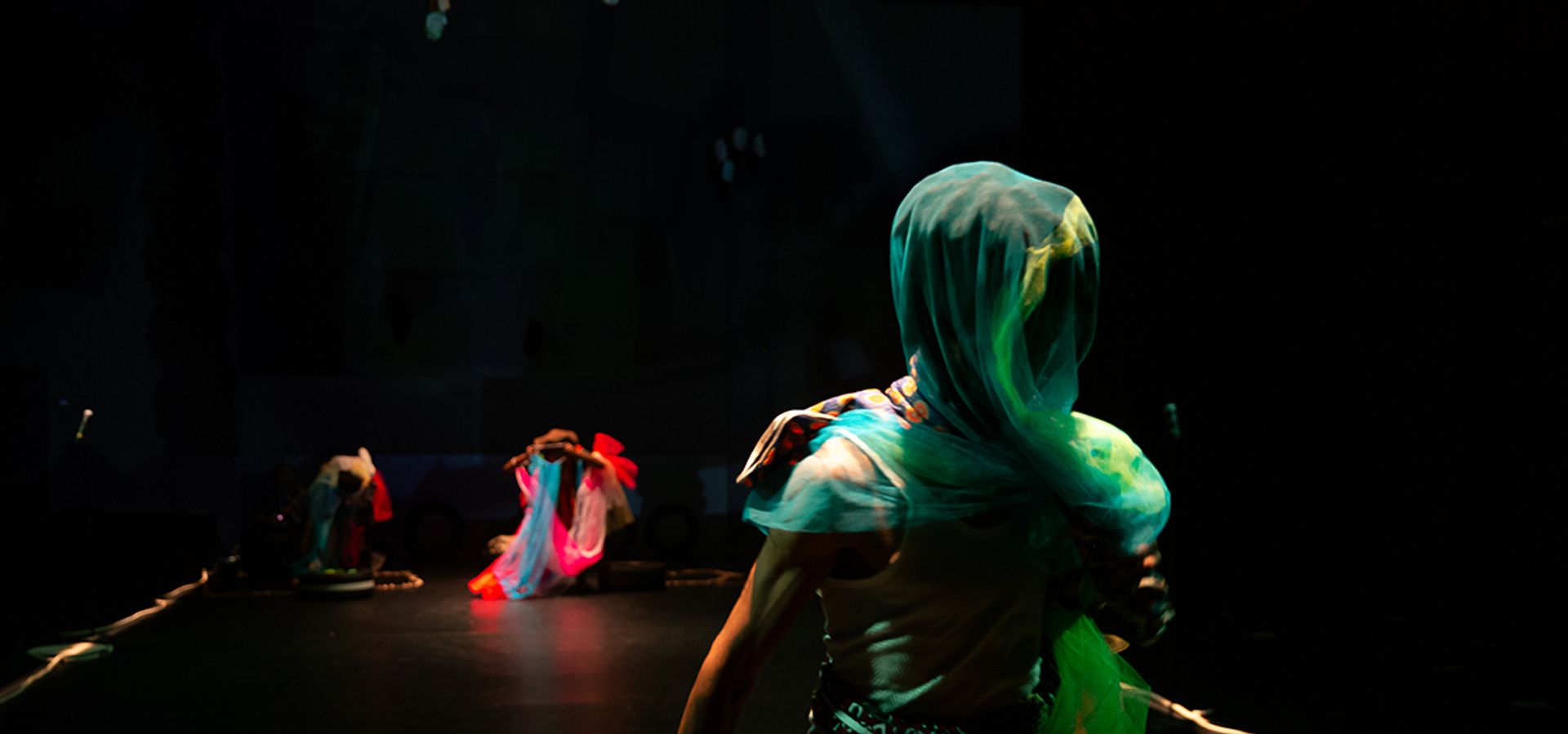Don’t ask what it’s about, ask why it’s there.
In response to the dance performance Coloured Swan 3: Harriet's reMix, researcher and author Sibo Kanobana wrote an article on what this performance is about. Or not?


What is this show about? It’s not a question I ask when I’m watching a piece by Anne Teresa De Keersmaeker or Wim Vandekeybus or Alain Platel. I don’t know what Harriet’s reMix is about, and that’s fine. What I do know, and what I value, is where Moya Michaels’ work is coming from: the environment she works in, the exchanges she finds, the people she surrounds herself with – and the excitement and contradiction that springs from those, as well as the doubts it raises in us. What comes out of the process is a fully authentic performance. It feels like coming home, like something that connects me.
The title is a nod toward the South African artist, Tracey Harriet Rose, with whom Moya has collaborated, and also toward Harriet Tubman, the nineteenth century black abolitionist and feminist icon who was born into slavery. That reference to slavery and women’s rights triggers me, because I have to ask: what is the link with three Afroeuropean men from Brussels? Even that phrase feels ripe and creative: Afroeuropean? The poster alone makes me think. I jump into my cultural archive, I sample and I start to reMix. Just one conversation with Moya and I’m a co-creator. It’s all about interaction, conversation and dialogue. It’s rich and complex, just like Teju Cole and his black rainbow.
In one sense, Moya uses her privilege to give people who are traditionally excluded from elite stages a place on them, and so challenges the whiteness of cultural institutions. But that’s blah blah blah, it’s not really what this is about. That’s only one reMix.
Maybe it’s more useful to ask why it’s there. How did it get there? Why is it urgent and necessary for Moya to do this, to show this, to work with those people, to say something important. Sometimes I think she’s making it for me. I feel loved. Loved for my black experience and my black epistemic perspective. I’m the audience. That’s where her life and the lives of the three young men working with her intersect and play a part. But isn’t that obvious? Let me lift a corner of the veil. Because: what is the history? What are we drawing out?
Imagine a clever, introverted boy, born in Belgium, whose white father ran away from his responsibilities, refused to recognise him and abandoned him. Imagine another boy who carries the story of the Haitian Revolution inside him and knows all too well how that forgotten struggle challenges and questions us, just as blacklight throws a different light on the West and the lies of humanism. Imagine a young man who questions ideas about masculinity and blackness and heteronormativity because he wants to be who he is, no more or less. And then imagine the journey of discovery for a young man with lots of friends, confident, an athletic talent, for whom football is the best route to success, one of the few legitimate spheres where black Belgians can shine and be recognised. Away from de-legitimised languages, away from criminalised and sexualised bodies.
Sensitive, complex, intelligent people who want to share their humanity with you. Who want to remain in conversation with you. People bursting with talent, who cannot be understood according to what you’ve learned about being black, being a man, being an immigrant, being non-white, being a Belgian, being illegal, being from Brussels, being Flemish, being allochtoon, being a category. Wouldn’t it be confusing: a world without all these categories, a world made of water... But confusion is good. Confusion is necessary. It spreads across the oceans.
I don’t want to use my body to tell you something you want to read. Read what they wrote for us and make of it what you will. Nobody controls that. In a sense, you too can be free – free like real, black bodies. No straitjacket. No black-white interpretation. This is something for you to digest on your own. The reMix gives us space to breathe – not just to survive, but to live.
Oh yes, and finally: the story of how these people met, went to Lagos together, to Ibadan and Ife, to look for authenticity, spirituality, understanding; to find a different epistemic perspective. To get closure with our colonial upbringing, where European roots are the thing, superior and accepted, and our African roots are hidden, denied, negligible, visible only in popular entertainment and whinge. Black culture? A culture of colour? A racialised identity reduced to a stigma, and an easy stigma that sticks to the body it deplores.
Harriet’s reMix shows all those stories, frees those bodies, shows the humanity of objectified lives in all their complexities.
Africa plays a crucial role, because there’s still a lot to be done before we properly value and understand the importance of African cosmologies, to show the link between the African drama and the European success story in all its rawness, to shine a black light on a white audience that is blinded by all that white. To revel in the complexity of Africa, and not just spread black pain, the black victim. No, this is about the inspiration, the richness, the virtuosity, the humanity. Africa has a lot more to offer than mineral wealth. But we’ve learned to only value Europe, to see whiteness as the real reasonable, while that white order and authority is built on the terror of colour, the terror of everything that sits outside that white; it is categorised and dehumanised. But maybe that’s more blah blah blah. A reMix of intellectual, academic analysis. Which is good, but it’s not everything. Because truly, Harriet’s reMix isn’t going to be a normal show. Here is something you’ve never seen before, and, hopefully, at the end you’ll ask yourself the question: why haven’t I?
Sibo Kanobana (1975) is a researcher in socio- linguistics at the University of Gent. He is co-author of the book De Bastaards van onze Kolonie/The Bastards of our Colony (2010) about the hidden stories of mixed-race children in Belgian Congo, and has published many articles on interculturality, identity and language policy. He is also editor of the Flemish arts magazine Rekto:Verso




